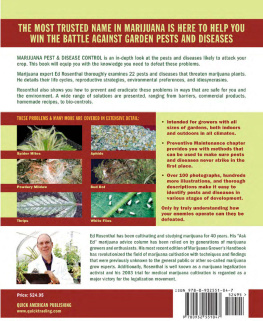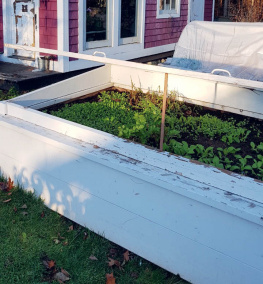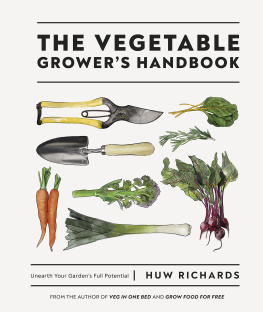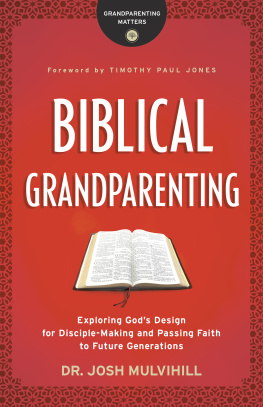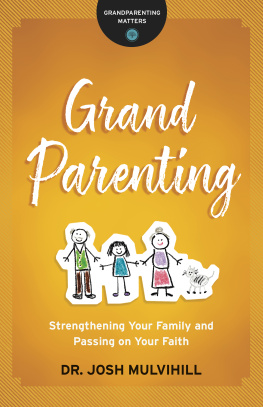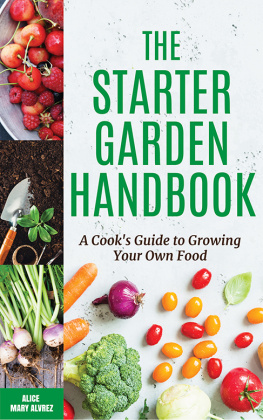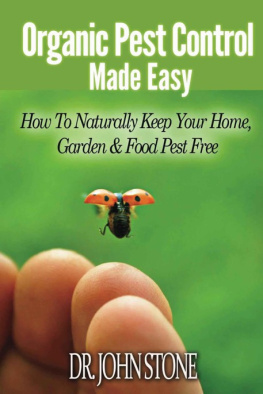Susan Mulvihill - The Vegetable Garden Pest Handbook
Here you can read online Susan Mulvihill - The Vegetable Garden Pest Handbook full text of the book (entire story) in english for free. Download pdf and epub, get meaning, cover and reviews about this ebook. year: 2021, publisher: Cool Springs Press, genre: Home and family. Description of the work, (preface) as well as reviews are available. Best literature library LitArk.com created for fans of good reading and offers a wide selection of genres:
Romance novel
Science fiction
Adventure
Detective
Science
History
Home and family
Prose
Art
Politics
Computer
Non-fiction
Religion
Business
Children
Humor
Choose a favorite category and find really read worthwhile books. Enjoy immersion in the world of imagination, feel the emotions of the characters or learn something new for yourself, make an fascinating discovery.

- Book:The Vegetable Garden Pest Handbook
- Author:
- Publisher:Cool Springs Press
- Genre:
- Year:2021
- Rating:5 / 5
- Favourites:Add to favourites
- Your mark:
- 100
- 1
- 2
- 3
- 4
- 5
The Vegetable Garden Pest Handbook: summary, description and annotation
We offer to read an annotation, description, summary or preface (depends on what the author of the book "The Vegetable Garden Pest Handbook" wrote himself). If you haven't found the necessary information about the book — write in the comments, we will try to find it.
The Vegetable Garden Pest Handbook — read online for free the complete book (whole text) full work
Below is the text of the book, divided by pages. System saving the place of the last page read, allows you to conveniently read the book "The Vegetable Garden Pest Handbook" online for free, without having to search again every time where you left off. Put a bookmark, and you can go to the page where you finished reading at any time.
Font size:
Interval:
Bookmark:
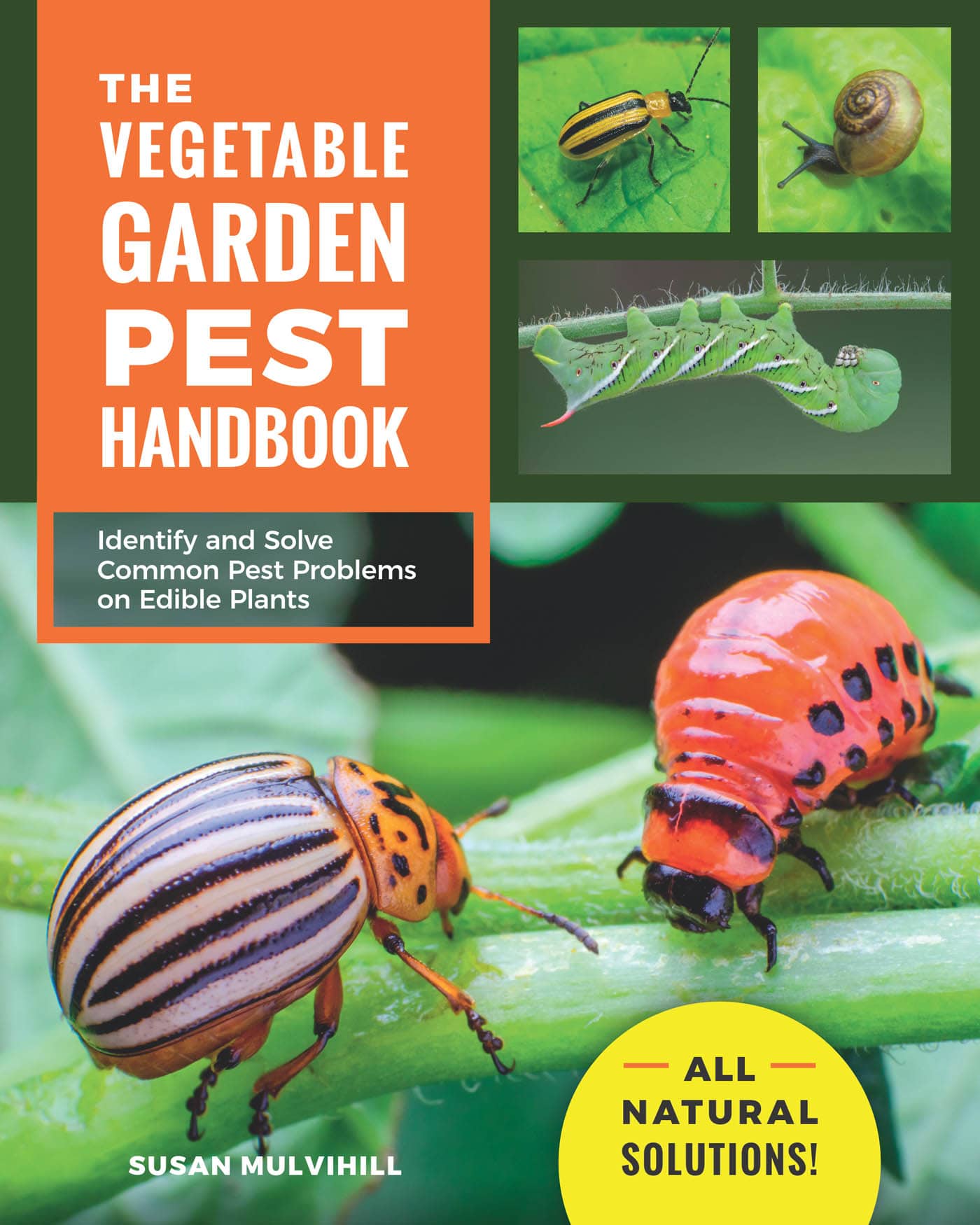

VEGETABLE
GARDEN
PEST
HANDBOOK
Identify and Solve
Common Pest Problems
on Edible Plants
SUSAN MULVIHILL


This praying mantis is ready to help you control troublesome insect pests.
Growing vegetables is a passion of mine. My love affair with them began the moment my grandmother took me by the hand to show me the wonders of her garden. Soon, I was raising my own zucchinis and tomatoes. I was hooked.
Throughout my adult life, Ive understood the importance of knowing how to grow your own food. Its a skill everyone should have and is simpler than you might think. Gardeners everywhere know how nutritious and delicious homegrown produce is, and thats what keeps them heading back to the soil year after year.
But theres one frustrating challenge many gardeners would rather not deal with: bugs!
In this book, you will find tools to identify vegetable garden pests so you can make informed gardening decisions. Heres a sampling of the resources that await you:
 Do some sleuthing in the Vegetable Crops and Potential Pest Problems table (). Find the crop youre growing, the damage youve spotted, and the likely culprit.
Do some sleuthing in the Vegetable Crops and Potential Pest Problems table (). Find the crop youre growing, the damage youve spotted, and the likely culprit.
 Learn important details about the most common vegetable pests: what they look like, their life cycle, the type of damage they cause, and ways to control them.
Learn important details about the most common vegetable pests: what they look like, their life cycle, the type of damage they cause, and ways to control them.
 Identify beneficial species () so you can easily recognize them and perhaps watch them in action.
Identify beneficial species () so you can easily recognize them and perhaps watch them in action.
Once youve pinpointed the problem pest, chapter three points you toward the most successful organic products and methods. Youll even receive step-by-step information for implementing many of them with DIY projects ().
Have you come across a bug in your garden that you dont recognize? Just scan the mugshots beginning on to identify it, then find details about it in chapter two. Youll also find many useful references and sources for the organic products Ive mentioned.
Whether you are a beginning gardener or have been growing your own food for years, I think youll agree that each season is a learning experience. While some years are a bit more challenging than others, making new discoveries is how we improve our skills.
As a Master Gardener and seasoned garden writer, I help individuals with specific pest challenges and post more generally on social media about how to deal with garden pests, particularly those that want to eat our veggies. I wrote this book to collect those scattered pieces as a single resource you can return to again and again to accompany you on your gardening journey. My goal is to provide useful information for all gardeners without being so technical your eyes glaze over.
Here you can learn how to thwart pests before they even arrive, partner with beneficials, and keep your plants so healthy, they can survive or even fend off inevitable attacks. My focus is on natural, low-impact (to the environment, not the pests!) controls for pests that become problematic. The most important lesson Ive learned over many decades of gardening is that you can grow a bountiful garden and outsmart the bugs without the use of synthetic chemicals. I am so excited to share this with you. Lets get started!

Healthy vegetable gardens should include flowers to attract pollinators and beneficial insects.
1 | INTRODUCTION TO ORGANIC PEST MANAGEMENT IN THE VEGETABLE GARDEN |

A bountiful harvest is the goal of vegetable gardeners everywhere.
Growing your own food is one of lifes greatest pleasures. The act of nurturing young seedlings, being out in the fresh air, harvesting that first vine-ripened tomato, and knowing you are putting healthy food on the table all combine to make it such a positive experience.
At least, it is until that first time you head into the garden and discover holes in the broccoli leaves or the biggest caterpillar youve ever seen nibbling on your tomato crop. Those arent exactly positive experiences, are they?
Whether you are a seasoned gardener or a beginner, you know insects and other bugs, such as spider mites, will be one aspect of growing a garden. And that isnt necessarily a bad thing. All kinds of bugsboth the good and the badplay important roles in a healthy environment.
Before we proceed, a clarification is in order. In this book, Ill discuss insects, spiders and spider mites (which are arachnids), pillbugs and sowbugs (crustaceans), and slugs and snails (mollusks). Within the animal kingdom, insects, arachnids, and crustaceans are all classes of arthropods. To be an arthropod, an animal must have a segmented body, jointed appendages, and an exoskeleton, and also lack a backbone (invertebrate). Thats pretty confusing, isnt it? My goal is to keep the information simple and relatable. Since we all refer to these creatures as bugs and insects, that is exactly what Im going to do in this text!
Humans have identified approximately 1 million insect species on our planet. If that freaks you out, take comfort in knowing that only about 1 percent of those species are pests to us. That puts things in a whole new perspective, doesnt it? Or, at least, I hope it does.
The remaining speciesapproximately 990,000are either beneficial or benign. Beneficialsbugs that include lacewings, ladybugs, ground beetles, and yes, even spidersspend their days munching on aphids, insect eggs, cutworms, and so many other problematic pests. Other beneficials pollinate the flowers of edible or ornamental plants. Youll meet these and many more . Get to know them as your partners in creating a healthy ecosystem in your garden.
Benign species, while they arent particularly helpful in controlling pests, dont bother humans or the crops we grow in our gardens or on farms. Many of them perform a critical role, feeding on decomposing plant material and building and aerating the soil in the process.
Myriad species of bugs contribute to the balance of our planets various, complex ecosystems. In our gardens, beneficials keep the pests from taking over and making the act of growing our food just about impossible, the benigns help keep the soil alive, and the pests feed the beneficials. If you let them, and even help them by how you garden, beneficials and benigns can extend that environmental balance to your garden by managing pests and improving your soil.
Font size:
Interval:
Bookmark:
Similar books «The Vegetable Garden Pest Handbook»
Look at similar books to The Vegetable Garden Pest Handbook. We have selected literature similar in name and meaning in the hope of providing readers with more options to find new, interesting, not yet read works.
Discussion, reviews of the book The Vegetable Garden Pest Handbook and just readers' own opinions. Leave your comments, write what you think about the work, its meaning or the main characters. Specify what exactly you liked and what you didn't like, and why you think so.

![Dowding - The Year-Round Vegetable Gardener’s Bible [7 Books in 1]](/uploads/posts/book/453239/thumbs/dowding-the-year-round-vegetable-gardener-s.jpg)
